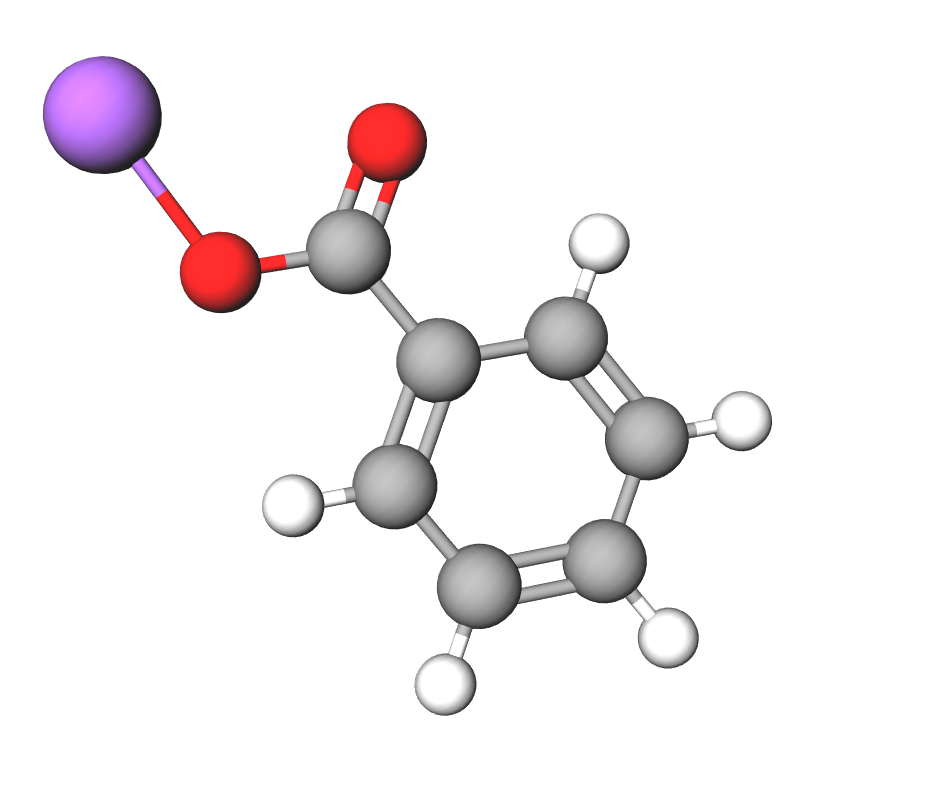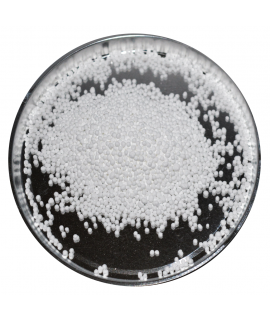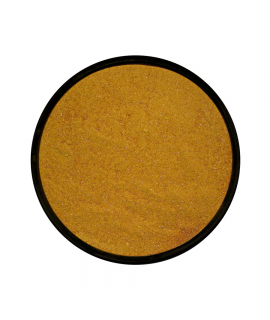SODIUM BENZOATE, (E211 food grade) 99,5%, kg
6.30 €
Disodium sulfite, CAS 7757-83-7, antioxidant, INCI SODIUM SULFITE.
Parameter | Attribute | |||
Sodium benzoate | E211, benzoate of soda | |||
Formula | C7H5NaO2 | |||
Structure |   | |||
IUPAC | Sodium benzoate | |||
INCI | SODIUM BENZOATE | |||
CAS | 532-32-1 | |||
Molar mass | 144,105 g/mol | |||
Density | 1,497 g/cm3 | |||
Solubility | In water: 62.69 g/100 mL (0 °C) | In methanol: 8.22 g/100 g (15 °C) | In ethanol: 2.3 g/100 g (25 °C) | In 1,4-dioksane: 0.818 mg/kg (25 °C) |
It is the sodium salt of benzoic acid with the chemical formula NaC7H5O2. It is a widely used food preservative with E number E211. It can be produced by reacting sodium hydroxide with benzoic acid.
In the food industry, sodium benzoate is used as a preservative. It is mainly used in acidic foods such as salad dressings (acetic acid), carbonated beverages (carbonic acid), jams and fruit juices (citric acid), pickle marinade (acetic acid) and spices. In some cases, sodium benzoate is used to inhibit the fermentation process of wines, and to have a "clean" label that does not use sulfites. When sodium benzoate is used as a preservative, it is converted into benzoic acid (E210), which protects food products from bacteria and fungi. Benzoic acid is generally not used directly because of its poor solubility in water. The preservation process starts with the absorption of benzoic acid into the cell. When the pH of the cell's internal medium drops below 5, anaerobic fermentation of glucose using phosphofructokinase slows down considerably, resulting in a significant slowdown in the growth, and survival, of the micro-organisms in the food that are responsible for spoilage of food. The recommended rate of sodium benzoate for food preservation is up to 0,1% of the total weight of the product.
In cleaning industry, the protective and antifungal properties of sodium benzoate mean that it is often used in conventional and even some organic furniture polishes, toilet, dish, kitchen and surface cleaners, dishwashing gels, carpet cleaners, upholstery cleaners and dishwashers.
In cosmetics, sodium benzoate E211 is used as a preservative in cosmetic and personal care products, baby products, bath products, soaps and detergents, eye make-up, cleaning products, make-up products, as well as hair, nail and skin care products. Sodium benzoate is one of the main ingredients in alcohol or alcohol-free mouthwashes. Sodium benzoate is used as an antifungal preservative in cosmetics and food under the name E211. It is therefore very effective against fungi, yeasts and bacteria. It is relatively easy to produce using baking soda, water and benzoic acid. It is found naturally in some fruits such as plums, prunes or apples. It is considered natural and allowed in organic cosmetic products.
In animal husbandry, sodium benzoate E211 can be used as a preservative in agricultural animal and poultry feed. The most common use is in the preparation of summertime feeds, which are moist, coated with molasses, glycerol, propylene glycol and mineral additives. The warm temperatures quickly cause the feed to spoil, reducing its efficiency and digestibility during the day. To avoid the risk of abnormal feed preparation, deterioration of livestock health and loss of milk production, up to 0,1 % of sodium benzoate is added to the total amount of feed prepared.
In heating systems sodium benzoate is used for its two properties: preservative and corrosion inhibiting. In one aspect, sodium benzoate protects heating systems from biofouling, preventing the growth of micro-organisms and algae which form slime systems that interfere with the transfer of heat and the smooth flow of the heat transfer fluid. In another aspect, sodium benzoate acts on the OAT principle (chelating effect), effectively binding metal ions and thus preventing the formation of large amounts of ions in the heating system that would lead to metal degradation (corrosion).
In pharmaceuticals, sodium benzoate is used as a treatment for urea cycle disorders due to its ability to bind amino acids. This causes the release of these amino acids and a reduction in ammonia. Recent studies show that sodium benzoate can achieve effective results when used as an adjunctive treatment for schizophrenia (1 g/d). Sodium benzoate is used to treat hyperammonemia. It is also used as a preservative for microbial-sensitive drugs. used as a solvent in a serum bilirubin test to suppress urticarial rashes
In pyrotechnics, sodium benzoate is used to produce a whistling sound when fireworks or pyrotechnics are ignited and/or reset.
Important: Add the item to your basket, fill in the recipient's details and confirm your order. Thank you!
To save your precious time, we will deliver your order to your address at a time convenient for You!
*- Pictures of the goods may not reflect the actual appearance, color, assembly or shape of the goods and their packaging. The information in the product description is general and may not correspond to the information on the packaging of the product and may not be accurate as to the use of the product. The information given on the stocks and prices of goods may, in certain cases, differ from the actual prices and stocks of goods
**- The product complies with the requirements for food additive E211 but is not intended for use as a food additive.
Signal word: Warning |
Hazard icons:
|
Danger phrases: H319 Causes severe eye irritation |
Precautionary statements: P264 Wash hands thoroughly after use. P280 Wear eye/face protection. P305 + P351 + P338 IN CASE OF CONTACT WITH EYES: Wash gently with water for several minutes. Remove contact lenses, if present and if easy to do so. Continue to wash eyes. P337 + P313 If eye irritation persists: seek medical advice. |
Related products
(8 other products in the same category)











